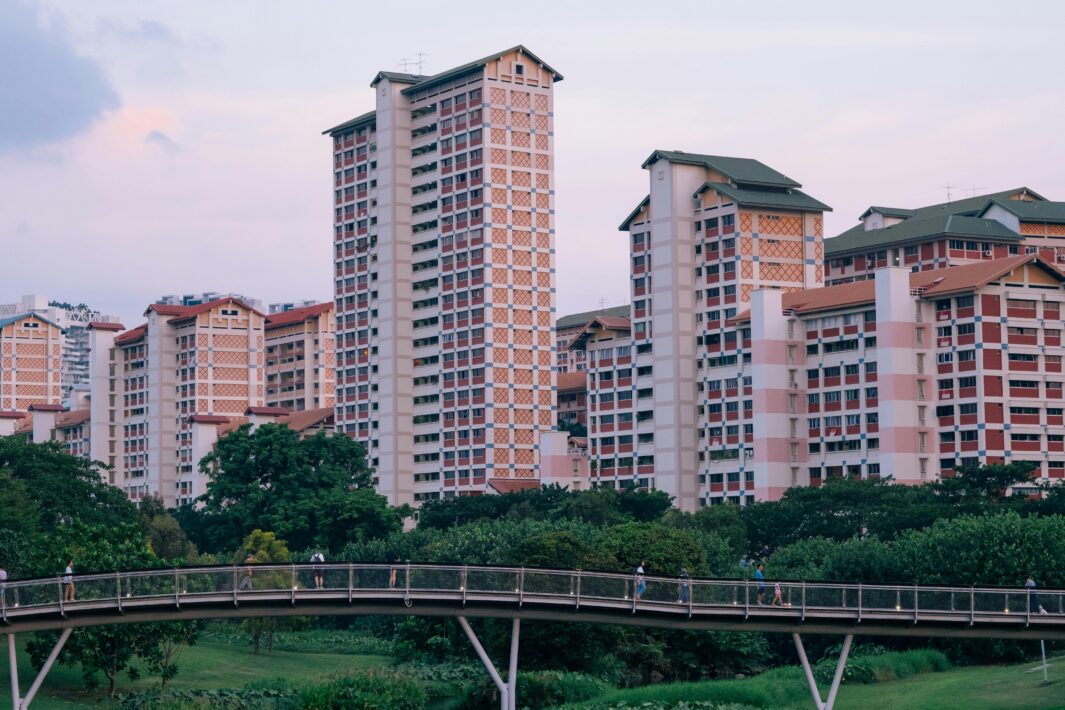In today’s fast-paced media landscape, sensational headlines can oversimplify complex issues like Singapore’s public housing. The book Kiasunomics 3, which was launched in May 2024, sparked discussions in the media about Build-to-Order (BTO) flats rushing young people into marriage and causing divorces. However, these claims do not fully reflect the nuance of the findings in our paper, which was co-authored with my colleagues, Professors Sumit Agarwal, Yi Fan, and Wenlan Qian. This commentary aims to clarify how BTO flats influence marriage decisions while addressing some of the common misconceptions.
Build-to-order flats, or BTOs, are public housing flats constructed to meet the housing demand of Singapore citizens whose household monthly income is $14,000 and below. This system has become a key part of Singapore’s housing policy, providing affordable housing options for young couples.
Marriage trends and the role of BTO flats
For many young couples in Singapore, securing a home is a significant milestone in their lives. This is particularly true in Asian societies, where homeownership is deeply ingrained as a precursor to starting a family. However, claiming that BTO flats are the sole reason couples marry oversimplifies the issue.
Data from the Department of Statistics shows that marriage rates have risen alongside the expansion of BTO flats. For example, marriage rates for people in their late 20s and early 30s noticeably increased as more BTO flats became available. This suggests that affordable public housing may play a role in encouraging marriage.
We also found that young people living in estates with more BTO supply were more likely to be married compared to other estates with lower BTO supply. However, housing availability is just one factor—personal values, career goals, and family planning are equally important in marriage decisions.
While marriage rates are influenced by housing availability, the relationship between BTO flats and divorce is more complex and requires further examination.
The complexity of financial strain and marriage stability
While marriage trends correlate with BTO flat availability, claims that BTO flats cause higher divorce rates, as documented in some media reports, are more contentious. Our findings show the relationship is more complex.
Divorce rates have risen over the years, especially among men and women in their 30s. However, divorces are influenced by many factors beyond housing—relationship challenges, lifestyle changes, and personal choices all play significant roles.
We found that couples living in BTO flats spent less each month, especially on luxury goods like jewellery and cosmetics. Women in BTO flats, for instance, spent significantly less on these items than women in non-BTO areas. While financial strain can affect marriages, our research suggests that BTO flats themselves are not a direct cause of divorce.
It’s essential to look at the bigger picture. Our research does not suggest that BTO flats lead to rushed marriages or subsequent divorces. However, we do not have the data to make such claims that couples changed their marriage plans because of BTO flats.
It’s important to avoid oversimplifying the relationship between BTO flats and marriage trends. Our research shows that BTO flats offer stability for young couples rather than posing risks to relationships. The key takeaway is not that BTO flats are bad for relationships but that couples should make careful financial decisions when buying a home.
A Public Housing Success Story
Beyond affordability, Singapore’s BTO flats allow young couples to plan their future together. This system fosters responsibility and stability, which aligns with broader national goals of community development.
Singapore’s public housing system, led by the Housing & Development Board (HDB), is internationally recognised. With over 90% homeownership, HDB provides affordable housing that builds strong, vibrant communities. BTO flats give young couples the security of homeownership and a foundation to build their lives together.
As Singapore’s public housing model evolves, it remains a cornerstone of national development, offering young couples a home and a foundation for their future.




